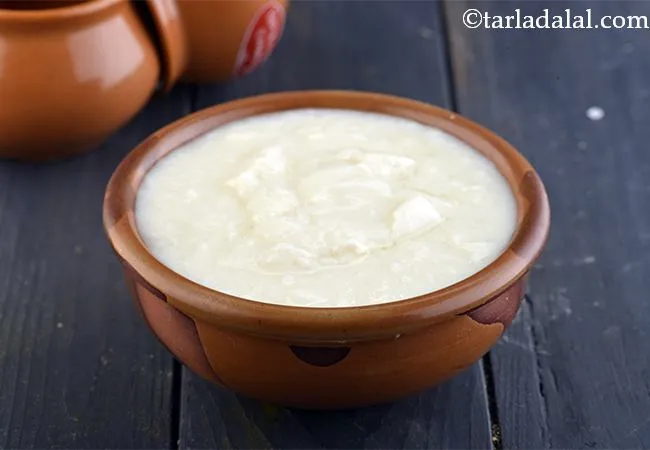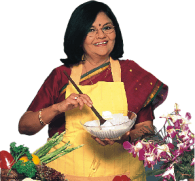Calories in Cabbage And Dal Paratha Recipe (Indian Dal Stuffed Paratha)
This calorie page has been viewed 5051 times

Table of Content
How many calories does one Cabbage and Dal Paratha have?
One Cabbage and Dal Paratha gives 175 calories. Out of which carbohydrates comprise 94 calories, proteins account for 20 calories and remaining calories come from fat which is 61 calorie. One Cabbage and Dal Paratha provides about 9 percent of the total daily calorie requirement of a standard adult diet of 2,000 calories.
175 calories for 1 Cabbage and Dal Paratha,Cholesterol 0 mg, Carbohydrates 23.8g, Protein 5g, Fat 7g. Find how much fibre, iron, calcium, zinc, magnesium, phosphorus, sodium, potassium, folic acid is present in Cabbage and Dal Paratha.
Click here to view Cabbage and Dal Paratha recipe.
Cabbage and dal paratha is a brilliant combination of cereals, pulses and vegetables. You are sure to enjoy the fine balance in this Indian dal stuffed paratha with the softness of dal dotted with crisp slivers of cabbage and aromatic ingredients like fennel and mint.
Spices like turmeric powder and amchur are flavour boosters. This is a perfect healthy breakfast recipe, to keep you energetic for a couple of hours. All health conscious people can use minimal oil for making the stuffing and cooking the paratha and include these patta gobhi moong dal paratha in their meals. They can benefit from the protein the dal lends and the fibre that wheat flour is rich in.
You can even try other dal paratha alternatives like the Chana Dal Paratha, Moong Dal Paratha and Green Moong Dal and Spring Onion Paratha. Enjoy them warm with a bowl of fresh curd or tongue-tickling pickle.
Tips for cabbage and dal paratha. 1. While cooking the moong dal, ensure that each grain is separate. This is a must for the stuffing. 2. Lightly cooking the rotis ensure uniform cooking after stuffing. 3. Mint leaves can be replaced with chopped coriander.
Is Cabbage and Dal Paratha healthy?
Yes, this is healthy. But restrictions apply to some.
Let's understand the Ingredients.
What's good.
1. Yellow Moong Dal : The fibre (4.1 g in ¼ cup) present in yellow moong dal prevents the deposition of bad cholesterol (LDL) in the arteries which promotes a healthy heart in turn. Packed with nutrients like zinc (1.4 mg), protein (12.2 mg) and iron (1.95 mg), yellow moong dal helps to maintain the elasticity of your skin and help to keep it moist. Fiber, potassium and magnesium from yellow moong dal will work together to regulate blood pressure and soothe the nerves and is diabetic friendly. See here for details of 7 amazing benefits of yellow moong dal.
2. Cabbage ( Gobhi) : Cabbage is low in calories, relieves constipation, good for diabetics. Cabbage has high levels of flavonoids and anthocyanins and has long been used as a herbal medicine. Rich in Antioxidants in turn lowers the risk of infection and inflammation of the body due to eating processed foods. See here all benefits of cabbage.
3. Whole Wheat flour : Whole wheat flour is excellent for diabetics as they will not shoot up your blood sugar levels as they are a low GI food. Whole wheat flour is rich in Phosphorus which is a major mineral which works closely with calcium to build our bones. Vitamin B9 helps your body to produce and maintain new cells, especially increase red blood cells. See detailed benefits of whole wheat flour and why it's good for you.
4. Onions (pyaz, kanda) : Raw onions are a very valuable source of vitamin C – the immune building vitamin. Along with other phytonutrients from onions, it helps to build WBC (white blood cells) which serves as a line of defence against illness. Yes, it’s a source of many antioxidants, the most important one amongst them being Quercetin. The quercetin in Onions promotes production of HDL (good cholesterol) and lowers total cholesterol in the body. The sulphur in onions act as a blood thinner and prevents blood clotting too. This in turn would lower blood pressure and good for heart, diabetics. Read the benefits of onions.
5. Mint Leaves (Pudina) : Mint (pudina) being an anti-inflammatory reduces the inflammation in the stomach and shows a cleansing effect. Sipping on a healthy drink like fresh mint and lemon tea is the best option to overcome nausea for mums-to-be. Moreover it's vitamin A (10% of RDA) and vitamin C (20.25%) serve as an additional boost to bring relief from cough, sore throat and also cold. Mint (pudina) is a leafy vegetable which is sure to create nourishing dishes without piling on calories, carbs or fat for that instance. What is has to offer instead is FIBER. See here for detailed benefits of mint leaves.
6. Curd + Low fat Curds : Curds help in digestion as it has very good bacteria. Probiotics in curds acts as a mild laxative but, in case of diarrhoea and dysentery, it is a boon, if curd is used with rice.They help in weight reduction, good for your heart and build immunity. The only difference between curds and low fat curds is the fat level. Read the benefits of curds to include in your daily diet.
What's the problem?
1. Vegetable Oils : To some vegetable oil is only soyabean oil, while some promote it as a mix of oils like soyabean, canola, sunflower, corn and other omega-6 rich oils. These are often cheaper options than many oils, but they are highly processed oils. They are undoubtedly not to be reached out for, whether you are looking for salad dressings, sautéing or cooking. The 5 best oils used in cooking are olive oil (low temperature short time cooking), avocado oil, canola oil, coconut oil and peanut oil. You must read the super article to find the facts of which oil is the healthiest avoid vegetable oil.
Can diabetics, heart patients and over weight individuals have Cabbage and Dal Paratha ?
Yes, this is healthy but cut the amount of oil used in the recipe. The fibre (4.1 g in ¼ cup) present in yellow moong dal prevents the deposition of bad cholesterol (LDL) in the arteries which promotes a healthy heart in turn. Whole wheat flour is excellent for diabetics as they will not shoot up your blood sugar levels as they are a low GI food.
Can healthy individuals have Cabbage and Dal Paratha ?
Yes, this is healthy. We suggest you pair it with homemade curds using cows milk or low fat curds.
Low Fat Curds ( How To Make Low Fat Curds)
Cabbage and Dal Paratha is good for
2. Healthy heart rotis restricted oil
3. Diabetics with heart issues restricted oil
4. Diabetic rotis restricted oil
5. High fibre to lower cholesterol restricted oil
6. Low cholesterol rotis restricted oil
Cabbage and Dal Parathas is rich in below macronutrients, vitamins and minerals given in descending order (highest to lowest).
- Vitamin C : Vitamin C is a great defence against coughs and colds. Have citrus fruits, lemons, vegetables ( capsicum, broccoli, cabbage). 46% of RDA.
- Vitamin B1 (Thiamine) : Vitamin B1 protects nerves, helps in carbohydrate metabolism, prevents heart diseases and helps produce red blood cells. 20% of RDA.
- Fiber : Dietary fiber reduces the risk of heart disease, prevents the spike in blood sugar levels and hence super for diabetics. Consume more fruits, vegetables, moong, oats, matki, whole grains. 17% of RDA.
- Phosphorus : Phosphorus works closely with calcium to build bones. 17% of RDA.
How to burn 175 calories that come from one Cabbage and Dal Paratha?
| Walking (6 kmph) = | 53 | mins |
| Running (11 kmph) = | 18 | mins |
| Cycling (30 kmph) = | 23 | mins |
| Swimming (2 kmph) = | 30 | mins |
Note: These values are approximate and calorie burning differs in each individual.
| Value paratha | % Daily Values | |
| Energy | 175 kcal | 9% |
| Protein | 5.0 g | 8% |
| Carbohydrates | 23.8 g | 9% |
| Fiber | 4.29 g | 14% |
| Fat | 7.01 g | 12% |
| Cholesterol | 0.0 mg | 0% |
| VITAMINS | ||
| Vitamin A | 141.7 mcg | 14% |
| Vitamin B1 (Thiamine) | 0.2 mg | 12% |
| Vitamin B2 (Riboflavin) | 0.1 mg | 4% |
| Vitamin B3 (Niacin) | 1.4 mg | 10% |
| Vitamin C | 18.2 mg | 23% |
| Vitamin E | 0.2 mg | 3% |
| Folic Acid (Vitamin B9) | 25.1 mcg | 8% |
| MINERALS | ||
| Calcium | 32.9 mg | 3% |
| Iron | 2.3 mg | 12% |
| Magnesium | 48.1 mg | 11% |
| Phosphorus | 104.1 mg | 10% |
| Sodium | 9.4 mg | 0% |
| Potassium | 177.1 mg | 5% |
| Zinc | 0.8 mg | 5% |
Percent Daily Values are based on a 2000 calorie diet. Your daily values may be higher or lower depending on your calorie needs.

Click here to view Cabbage and Dal Paratha
Calories in other related recipes
















